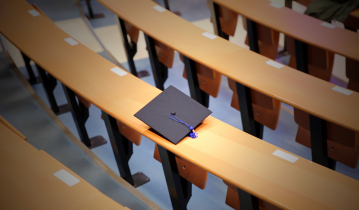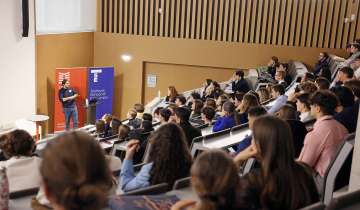Lan LAN soutiendra sa thèse de doctorat en sciences économiques le mardi 12 juin 2018 à 13h30, Salle MQ 212 (Manufacture des Tabacs) sur le sujet «Essays on Household Savings, Intergenerational Transfers and Production Network».
Directeur de thèse: Thomas CHANEY
Membre associé de TSE et professeur Sciences Po Paris
Le jury sera composé de :
- Ghazala AZMAT, Professeur, Sciences Po Paris
- Thomas CHANEY, membre associé TSE et Professeur Sciences Po Paris
- Nicolas COEURDACIER, Professeur, SciencesPo
- Christian HELLWIG, Professeur, TSE
Résumé (en anglais)
This thesis investigates several topics in Macroeconomics, which contains three self-contained papers, each corresponds to one chapter. A common thread of the three papers is to address macroeconomic questions from the perspective of micro-level theory and data. The first and second chapter explore China’s saving rates using household-level theory and surveys. It explains the “camel-shaped” age-saving profile of Chinese households, with a focus on intergenerational transfers. The third chapter explores the propagation of firm-level volatilities in production network. The thesis consists of three chapters, each of which is self-contained and can be read separately.
The first chapter investigates how can intergenerational transfers explain the camel-shaped age-saving profile of Chinese households. Commencing in 2005, a “camel-shaped” age-saving profile of Chinese households began to emerge, which has been documented by various studies. This “camel-shape” feature is puzzling considering that it is at odds with the Life-Cycle Hypothesis. In this paper, we show that the camel-shaped age-saving profile of Chinese households is largely due to the middle-aged households generating a vast amount of intergenerational transfers. These households transfer a significant fraction of their wealth to their children and parents, primarily to their children. In a quantitative overlapping generations (OLG) model, saving rates are linked with altruism of parents and credit constraints of their children, through intergenerational transfers. Saving rates of middle-aged parents decline with altruism (“altruism” channel”) and the tightness of their children’s credit constraints on housing purchase (“credit constraint” channel). The estimations of life-cycle saving rates based on this model line up well with the data.
The second chapter validates the hypothesis on altruism, credit constraints and saving rates. Using a sample of matched parent-child pairs from the China Family Panel Studies, this chapter tests the “altruism” channel by exploiting the exogenous deaths of children as a natural experiment. Next, I test the “credit constraint” channel from two mechanisms: random allocation of military graduates to different cities, and cross-city variation of mortgage accessibility. Parents whose children are sent by the military to cities with higher housing prices have lower saving rates, ceteris paribus. Access to discounts of down payments for home- buyers leads to an increase in their parents’ saving rates.
The third chapter examines whether firm-level idiosyncratic shocks propagate in production networks. This paper identifies idiosyncratic shocks with mergers and acquisitions (M&A).It find that M&A events impose substantial productivities and revenues gains on the target firms. These gains translate into significant output increase and spill over to their customers through input-output linkages. Surprisingly, the indirect effects of M&A on customer firms are much larger than the direct effects on target firms. This comes from the fact that M&As leads to increase of asymmetry in network structure, therefore further amplifies the firm-level shocks.



